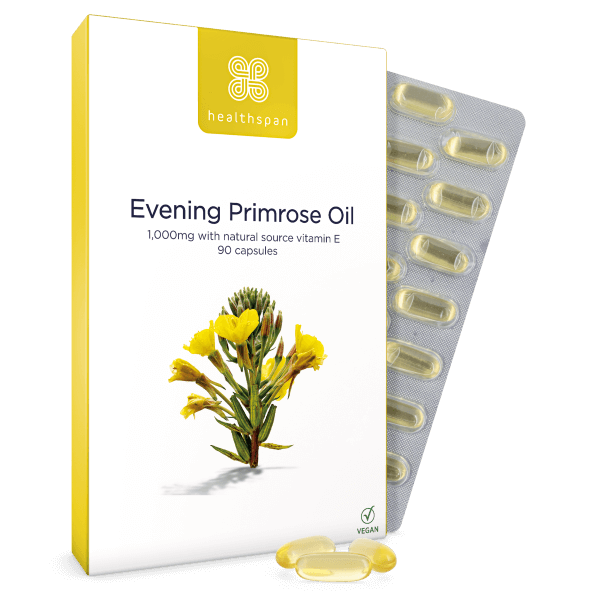Evening primrose oil (EPO) is a well-known remedy typically bought for hormone balancing and dry and itchy skin conditions.
🕒 2 min read
Harvested from the seeds of the evening primrose plant, EPO contains fatty acids including gamma-linolenic acid (GLA), which is the only omega 6 fatty acid to have significant anti-inflammatory effects, and linoleic acid (LA), an omega 3 essential fatty acid that is converted to GLA in the body.
Essential fatty acids are believed to have an anti-inflammatory effect, easing the inflammation that causes many illnesses, including rheumatoid arthritis (RA) – an auto-immune disease where the body produces antibodies which attack the joints – and skin conditions.
EPO has many uses, from improving the look and texture of your skin, to relieving hot flushes and RA pain. Although the body can make some GLA, its production is often blocked by lifestyle factors. EPO supplements provide a concentrated source of GLA. The high level of linoleic acid present is converted to GLA in the body, too.
What can evening primrose oil help?
EPO contains fatty acids, and these have an anti-inflammatory effect. GLA found in EPO is used to make hormone-like chemicals called prostaglandins, which act by dampening down inflammation.
Hot flushes and breast pain
A study of women in the run-up to the menopause found that those who took EPO had less severe and less frequent hot flushes than those who took a placebo. There have been many studies into the effects of EPO on breast pain, which women can experience during their monthly cycle; some found EPO helps, but others didn't.
Rheumatoid arthritis
Versus Arthritis says there's some evidence EPO may relieve morning stiffness in RA, although it's not conclusive. One trial on the benefits of EPO for people with rheumatoid arthritis found that pain and morning stiffness symptoms improved while taking it.
Skin conditions
EPO has been used for treating dry, itchy skin conditions including eczema. Several studies have found it is useful in treating atopic eczema. One study published in the British Journal of Dermatology found that eczema patients treated with an oral EPO supplement for 12 weeks had a significantly greater reduction in inflammation than those given a placebo. However, a Cochrane review published in 2013 concluded EPO didn't have any effect on treating eczema.
Getting EPO from your diet
No one food source provides the concentration of GLA found in EPO, but other sources of GLA include borage seed oil and blackcurrant seed oil.
Safety
If EPO is taken at the correct dose there are no major safety concerns. Mild side effects can include skin rashes, nausea and stomach upsets. Be cautious if you are taking warfarin, the blood-thinning drug, as interactions are possible.
Always check with your doctor first before taking EPO.
Correct dosage
There's no recommended set daily allowance. A typical dose for cosmetic purposes is one 1,000mg supplement a day; a dose of 2,000mg a day (two capsules) is ideal for three to four months.

Evening Primrose Oil 1,000mg
Maximum strength 1,000mg Evening Primrose Oil
- Supports women's health
- Rich source of omega-6 fatty acids
- Added natural source vitamin E






